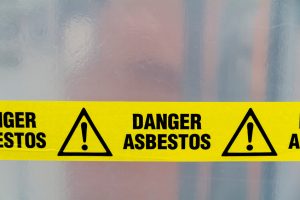The maxim not to let your employees take hazardous materials home on their clothes or other personal items can now be seen as more than just a best practice. An influential state Supreme Court recently ruled that employers are responsible and liable under a “general duty of care” for injuries to household members affected by asbestos brought home on a worker’s clothing. Let’s take a look at what happened.
 |
Issue
Here’s the nut of the issue in this case, Kesner v. S.C., brought before the California Supreme Court. If your business involves either the use or manufacture of asbestos-containing products, are you liable to members of an employee’s household who could be affected by asbestos brought home on your employee’s clothing?
The Cases of Johnny and Lynne
Two families in California sued employers for the deaths of family members who were allegedly exposed to asbestos from fibers on the employees’ clothing. The California Supreme Court consolidated the cases.
In Kesner v. Pneumo Abex, LLC, Johnny was diagnosed with mesothelioma in 2011. He was the nephew of George Kesner, who worked at an Abex plant most of his life and was exposed to asbestos fibers through his work in the manufacture of brake shoes. From 1973 to 1979, Johnny spent an average of 3 nights a week at his uncle’s home, sometimes sleeping near him and roughhousing with him while George was still in his work clothes. Johnny alleged that his exposure to the asbestos carried home on his uncle’s clothes contributed to his contracting mesothelioma. Johnny died in 2014.
In Haver v. BNSF Railway Company, Lynne’s children allege that her diagnosis in 2008 and subsequent death from mesothelioma in 2009, was the result of exposure to asbestos brought home by her husband Mike. Mike was an employee of a predecessor of BNSF from 1972 through 1974 and was regularly exposed to asbestos from pipe insulation and other products.
Both the Kesners and the Havers lost the cases in lower courts.
What the Court Said
The California Supreme Court relied on the state Civil Code 1714, which establishes a general duty to exercise ordinary care in one’s activities. The Court said that this includes the use of asbestos in one’s business (the Kesner case, i.e., negligence in the manufacture of brake pads) and on one’s premises (the Haver case, i.e., there was asbestos at the workplace).
Note. Although California does not have a counterpart to the federal Occupational Safety and Health Administration’s (OSHA) General Duty Clause, in the Kesner and Haver cases, the California Supreme Court invoked California Civil Code 1714(a), which holds that everyone is responsible for injuries to someone else caused by a lack of ordinary care.
Key Takeaways for EHS Managers
Key findings of the Court, which may be relevant in other cases and under OSHA’s General Duty Clause, include:
- At the times of the exposures in these cases, there was enough substantiated and uncontested information, including a federal OSHA standard, that addressed the harmful effects of asbestos.
- Secondary, or household, exposure of family members to asbestos is foreseeable because—wait a minute!!!—employees go home.
- An employee’s role in bringing asbestos fibers home is the result of the employer’s failure to control or limit exposure in the workplace.
- Preventing injury to workers’ household members from asbestos exposure does not impose a greater burden on employees than preventing exposure and injury to the workers themselves.
- An employer’s duty to prevent take-home asbestos exposure extends only to members of a worker’s household, i.e., people who live with the worker and are, therefore, foreseeably in close and sustained contact with the worker over a significant period of time.
Court Actions
In both cases, the California Supreme Court reversed the judgment of the lower court and remanded the case to the Court of Appeals to come up with findings more consistent with the state Supreme Court opinion.
In the Kesner case (nephew Johnny), the Court of Appeals was also ordered to take steps in figuring out whether Johnny was a member of his uncle’s household for the purposes of establishing Abex’s “duty” as recognized by the Supreme Court opinion.
Seven Tips to Make Sure Asbestos Stays at Work
Preventing take-home exposure of asbestos, or any other hazardous material for that matter, starts with controlling exposure in the workplace. Employers are required to provide a number of safeguards, including engineering controls, hygiene facilities, protective equipment, and training, to protect workers from exposure to asbestos.
Here are some tips for your workers to help them leave the asbestos at work and not expose family members.
Tip 1. Always check for asbestos warning labels and signs and take the necessary precautions.
Tip 2. Ask your supervisor if you are not sure if something contains asbestos.
Tip 3: When you use protective clothing for an asbestos-related project, you must remove contaminated clothing without releasing the fibers. So, don’t blow or shake the dirt off because these clothes need special cleaning or disposal.
Tip 4: Change your clothes or vacuum off surface asbestos fibers before you enter the lunchroom. (Note: For employees who work with asbestos above permissible exposure limits, OSHA requires employers to provide clean change rooms; separate lockers or storage facilities for street and work clothes; showers; and a lunchroom with a positive pressure filtered air supply).
Tip 5: Wash your hands and face before you eat, drink, or smoke.
Tip 6: Do not leave your workplace wearing any clothing or equipment worn during your work shift if you are required to shower because of the amount of asbestos in your work area.
Tip 7: Place asbestos-contaminated work clothes in the assigned labeled and closed containers.
